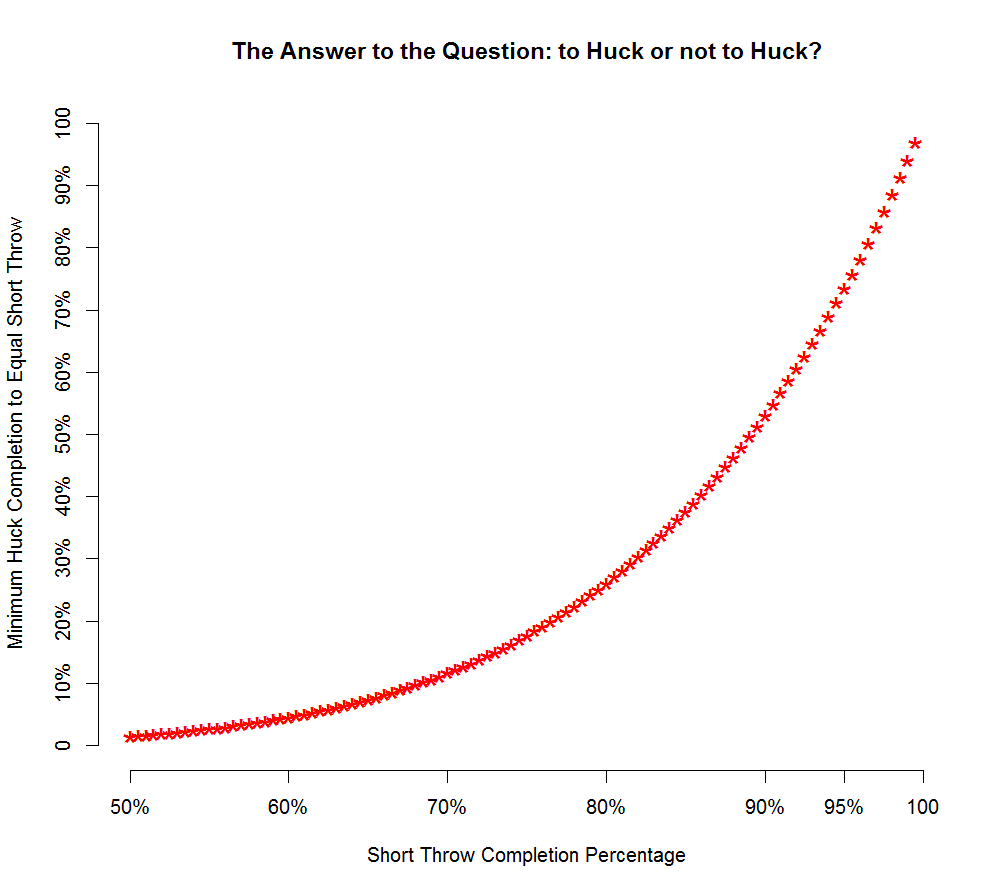To Huck or not to Huck?
February 16, 2015 By Alan J. SalzbergI play a lot of Ultimate Frisbee, a game akin to football in that there are end zones, but akin to soccer in that there is constant action until someone scores. In Ultimate, you can only advance by throwing the disc (so-called because we generally do not generally use Wham-O branded discs, which are called Frisbees). An incomplete pass or a pass out of bounds is a turnover, as is a "stall," where the offense holds the disc without throwing for more than 10 seconds. In other words, in order for the offense to score, you need to complete passes until someone catches the disc in the end zone. The accepted method of doing this is to complete shorter, high-percentage passes. On a non-windy day, it seems fairly simple for at least one of your six teammates to get open and thus you can march down the field. Of course, one long pass, or "huck," can shortcut the process and give your team the quick score. Much like football, the huck is not typically done except in desperation (game almost over due to time or thrower almost stalled). However, I am not at all sure this logic makes sense. Suppose you need six short passes to advance to a score. If your team completes short passes with a probability of 90%, you will score about 53% of the time (90% to the sixth power gives the chances of completing six passes in a row). In other words, as long as the chance of completing the huck is more than 53%, you would have a better chance of scoring with a huck. Thus, the relative chances of scoring via the two methods depends on three things: 1) chance of completing a short pass, 2) chance of completing a huck, and 3) number of short passes needed for a score. The graph below shows the threshold huck completion rate (the rate at which it makes more sense to huck) for different short pass completion rates and always assuming 6 short passes is enough for a score and one huck is enough for a score.

In case it is difficult to see, at a 95% short pass completion rate, your huck percentage needs to be 74% in order for it to be better to huck. If your short pass completion rate is 50%, huck away unless your huck completion rate is less than 2%.
Of course, this simple analysis assumes 6 throws equals a score, and it also leaves out a number of other factors. For example, an incomplete huck confers a field advantage to the hucking team because the opposing team has to begin from the point of in-completion (as long as it was in-bounds). On the other hand, it may not take long for the opposing team to figure out the hucking strategy and play a zone style defense that will lower the hucking chances considerably.